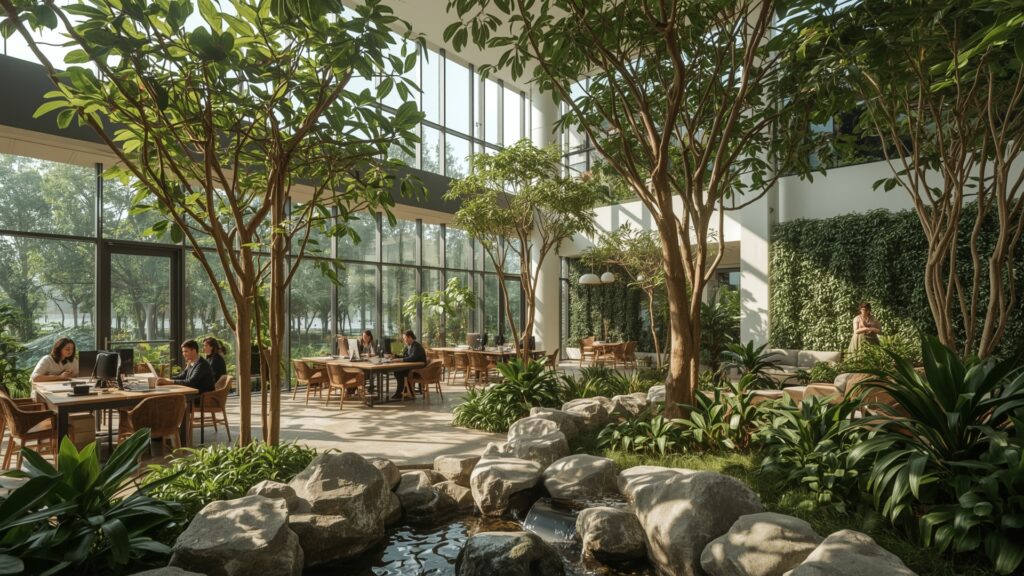In a world where we spend approximately 90% of our time indoors, the disconnect from nature has become a critical issue affecting our mental and physical well-being. Biophilic Design offers a powerful solution by integrating nature into architecture and interiors, improving health, productivity, and happiness.
What is Biophilic Design?
Biophilic Design stems from the concept of biophilia—a term popularized by biologist Edward O. Wilson, meaning “love of nature.” It’s a design philosophy that consciously incorporates natural elements such as daylight, plants, natural materials, water, and organic shapes into our built environments to foster a deep connection with the natural world.
Why Biophilic Design Matters: Facts & Figures
1. Improves Mental Health & Reduces Stress
Research shows that exposure to natural elements in the workplace can reduce stress levels by up to 37% (Human Spaces Report, 2015).
2. Boosts Productivity by Up to 15%
The same report found employees working in environments with natural features were 15% more productive and reported greater creativity and job satisfaction.
3. Enhances Recovery in Healthcare
Patients in hospital rooms with views of nature experienced faster recovery times and required 22% less pain medication compared to those without natural views (Ulrich, 1984).
4. Increases Concentration by 20% in Schools
Students in classrooms designed with biophilic principles showed a 20% improvement in concentration and cognitive function (Jensen, 2015).
5. Reduces Sick Days
Offices with biophilic design elements can reduce absenteeism by up to 6% due to better air quality and well-being (World Green Building Council).
Key Elements of Biophilic Design
-
Natural Light: Maximizing daylight exposure, which boosts vitamin D synthesis and mood.
-
Indoor Plants & Greenery: Indoor plants can improve air quality by removing toxins and increasing humidity.
-
Natural Materials: Use of wood, stone, and bamboo creates warm, tactile environments.
-
Water Features: Elements like fountains introduce soothing sounds proven to lower heart rate.
-
Views of Nature: Even window views to green spaces improve cognitive function and reduce fatigue.
-
Organic Shapes & Patterns: Biomimicry and fractal patterns mimic nature’s forms, promoting calmness.
-
Improved Air Quality & Ventilation: Fresh air circulation reduces airborne pathogens and allergens.
-
Nature Sounds: Background sounds such as birdsong can improve mood and focus.
Applications of Biophilic Design
-
Corporate Workplaces: Redesigning offices to include plants, natural light, and views can increase employee retention and creativity.
-
Healthcare: Healing environments with natural elements support faster recovery and lower stress.
-
Education: Schools that integrate greenery and natural light boost student performance and attendance.
-
Residential: Homes designed with biophilic elements enhance occupant comfort and well-being.
-
Urban Development: Cities integrating parks, green roofs, and vertical gardens create healthier, more sustainable communities.
Final Thoughts
Biophilic Design is not just a design trend but a necessity backed by science. As we look to the future of architecture and urban planning, integrating nature into our indoor spaces is essential to promote health, happiness, and sustainability.
By embracing biophilic design, businesses and designers are not only creating beautiful spaces but also fostering environments where people can thrive — physically, mentally, and emotionally.
#BiophilicDesign #Architecture #Wellbeing #Sustainability #InteriorDesign #WorkplaceWellness #HealthySpaces

